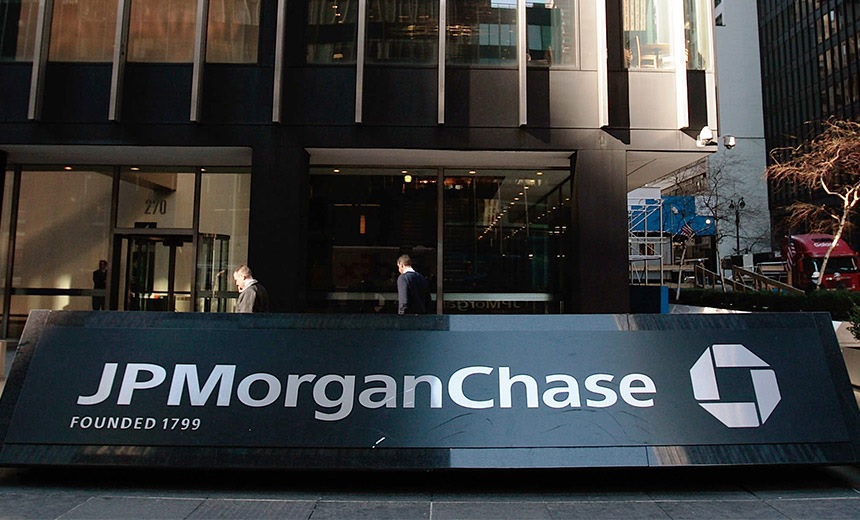by Jeffrey Kleintop, CFA® Managing Director, Chief Global Investment Strategist, Michelle Gibley, & Heather O'Leary, Charles Schwab & Co., Inc.
Our outlook for 2024 is for a gradual U-shaped recovery composed of seemingly chaotic movements in economic data with turning points in policy rates and earnings growth.

The big picture we see for 2024 is of a shallow U-shaped recovery in global economic and earnings growth, rather than the V-shape seen in the last two global recessions of 2008-09 and 2020. If in 2023 the global economy experienced a soft landing with growth for much of the Group of Seven countries (Canada, France, Germany, Italy, Japan, United States, and United Kingdom) stalling but not contracting much, then it's also likely that a soft recovery gets slowly underway during 2024, with growth rebounding only modestly (and unevenly) throughout the year. Global stocks may react with heightened volatility to the seemingly chaotic data points as parts of the global economy move in different directions, with a broader stabilization and recovery only visible over time. Patient investors in global stocks with an eye on the big picture may benefit despite an uneven path higher should markets discount better growth ahead supported by rate cuts among major central banks.
Cardboard box recovery
Tied for all-time record duration of global manufacturing recession

Source: Charles Schwab, S&P Global, Bloomberg data as of 11/28/2023.
A modest "cardboard box" recovery for 2024 may see a reversal in relative growth. Manufacturing economies may begin to improve while more service-based economies slow. The global services PMI edged down 0.3 points to 50.4 in October. While the latest reading still indicates modest growth, it's come down steadily from the peak of 55.3 in April and the share of economies where the services economy was expanding fell to 57%.
The 2024 forecasts from the OECD (Organization for Economic Cooperation and Development) published last week reflect these reversing trends. Germany's GDP is expected to accelerate out of recession in 2024 while growth in France and the U.S. is expected to slow. The different trajectories of the manufacturing and services sectors adds to the noise in the individual data points we might see in 2024, making the big picture a challenge for investors to discern.
Quarterly changes in GDP for Group of Seven countries

*economists' consensus forecast for Q4. Data is quarterly change in GDP, not annualized.
Source: Charles Schwab, Bloomberg-tracked consensus economists' forecasts as of 12/1/2023. Forecasts contained herein are for illustrative purposes only, may be based upon proprietary research and are developed through analysis of historical public data.
Weaker job market
A weakening of the labor market in 2024 is implied by the chart of the manufacturing employment PMI, which leads job growth in Europe (see the chart below). Further evidence that the labor market is cooling can be seen in Germany's unemployment. It has risen for the 10th month in a row in November, pushing the German unemployment rate up to 5.9%, nearly a full percentage point above its post-pandemic low of 5.0%. We have observed at least one month of job losses in most of the G7 economies, including the U.K., Germany, Canada, Italy, and Japan. France reports employment quarterly and saw a 0.1% gain in employment in the third quarter but could be on the cusp of reporting weaker employment as well.
PMI employment survey has tended to lead trends in the labor market by 6-18 months

Source: Charles Schwab, S&P Global, Bloomberg data as of 11/29/2023.
Relief from inflation
Inflation closes to ECB target

Source: Charles Schwab, S&P Global, Eurostat, Bloomberg data as of 11/30/2023.
Forecasts contained herein are for illustrative purposes only, may be based upon proprietary research and are developed through analysis of historical public data.
Lagged impact
The rise in rates has not yet been felt by most households

Source: Charles Schwab, Bank for International Settlements, Macrobond data as of 11/28/2023.
- First, borrowers extended much of their debt from short-term adjustable rates to long-term fixed rates. In Spain more than 90% of mortgages featured variable rates in 2015, but by 2020 the share of variable-rate mortgages dropped to less than 25%, replaced by fixed rate mortgages according to data from the Spanish National Statistics Institute and the Bank of Spain.
- Second, spurred by higher rates and solid income growth, consumers paid off some debt, lowering overall debt levels, according to data from the European Central Bank.
- Third, income rose just as fast as debt costs did. Official data from Eurostat through the first half of 2023 shows wages climbed 4.6% since the second quarter of 2022, slightly ahead of the rise in interest rates.
Looking ahead to 2024, wages probably won't continue to rise as fast, and both variable-rate debt and new debt will reflect higher rates. It's likely that household budgets will be tighter than in 2023, a lagged response to the rate increases. In contrast, the drop in the eurozone's inflation towards the ECB's 2% target is a sign that the ECB may begin to reverse rate hikes by mid-2024, easing some of the potential impact on households and helping to slowly improve or maintain economic momentum through the year.
From hikes to cuts
Slow fade: policy interest rates

Source: Charles Schwab, Macrobond data as of 12/1/2023.
Futures and futures options trading involves substantial risk and is not suitable for all investors. Please read the Risk Disclosure Statement for Futures and Options prior to trading futures products.
Moves by the BOJ could overshadow those by the Federal Reserve and other central banks if Japanese investors begin to sell foreign bonds, stocks, and currencies. Decades of current account surpluses have accumulated, giving Japan the world's largest net international investment position (even more than China) with $3.3 trillion of investments held abroad according to the International Monetary Fund (IMF). Although the U.S. has the largest economic influence in the world, Japan may have the largest influence in the asset markets due to these account surpluses. Should the BOJ begin to substantially tighten monetary policy next year, as signaled by the end of yield curve control at the BOJ's meeting in October, the potential for a reversal of decades of outward flow of capital may be felt by investors worldwide. With rates rising in Japan contrasting with rate cuts elsewhere, the yen could surge along with Japanese bond yields, prompting Japanese investors to bring their money home and invest in Japanese assets.
Net international investment position by country

Source: Charles Schwab, International Monetary Fund, Bloomberg data as of 11/5/2023. Data is in US Dollars.
The whole picture
Global economic and earnings growth may ultimately be sluggish for much of next year. That could mean stock prices are more determined by moves in the price-to-earnings ratio than earnings as investors try to figure out what the right valuation multiple is in an environment of higher discount rates and uncertainty over the timing and pace of an earnings rebound. International stock valuations are already braced for a challenging 2024 with investor sentiment surveys in Europe not far from decade lows and the price-to-earnings ratio for the MSCI EAFE Index 15% below its 10-year average, and many Japanese stocks have price-to-book ratios below 1.0. Valuations could lift on clarity around rate cuts and as the economy firms later in the year.
As with the economic picture, looking too closely at the performance of just a few U.S. stocks can keep investors from seeing the bigger picture of international outperformance. As the global economy transitions to a new cycle, markets are experiencing new leadership. In 2023, the average international stock outpaced the average U.S. stock through late November, as you can see in the chart below of the equal-weighted indexes (where each stock in the index gets an equal weighting). The MSCI EAFE Equal-Weighted Index has outperformed the S&P 500® Equal-Weighted Index by nearly 5% in 2023, adding to the 15 percentage points of outperformance since the bear market ended in October 2021.
International outperformance in 2023

Source: Charles Schwab, Bloomberg data as of 11/28/2023.
Data has been normalized, or indexed on 12/30/2023. Indexes are unmanaged, do not incur management fees, costs and expenses and cannot be invested in directly. Past performance is no guarantee of future results.
Emerging market stocks' relative performance is likely to revolve around China and India, the top two countries represented and summing to over 40% of the value of stocks in the MSCI EM Index.
- Reasons prompting concern around investing in China may be improving, yet growth is unlikely to surprise on the upside given the property market overhang. Volatility is likely to remain characteristic of Chinese stocks in 2024. Read more here: Is China investable?
- India's growth momentum may carry it to the top three global economies in size before the end of the decade if it is able to capitalize on its transformative initiatives. India's stocks are expensive, perhaps already pricing in high expectations. Holding a broad mix of exposure to emerging markets includes meaningful exposure to India's growth, but also diversification to help insulate from its risks. Read more here: India: On the Rise
Artificial Intelligence (AI) holds the potential to transform employment, drive faster productivity growth, and drive gains for investors. Business investment is likely to climb in 2024 as the benefits of AI to their businesses become more evident, offering the potential for a productivity payoff in the second half of this decade. AI-related stocks may benefit from increasing capital investment and provide an opportunity for investors as firms look to improve their business processes. But portfolio diversification remains important given the heightened volatility that often accompanies new technologies and likely shifts in leadership as the technology and adoption evolves. Read more about Investing in Artificial Intelligence.
We do not expect a V-shaped economic recovery, nor do we expect an inverted V-shape to the path for interest rates, so we continue to favor "quality" companies with strong cash flow. Stocks with low price-to-cash flow ratios—more heavily represented in the MSCI EAFE Index—may continue to outperform in 2024. While these stocks can be found in all sectors, they are more concentrated in Financials and Energy.
For investors in 2024, what may seem like chaotic data points and volatile market performance on a day-to-day basis may resolve with some longer-term perspective into a clearer and bigger picture of a new multi-year cycle getting underway over the course of 2024.















